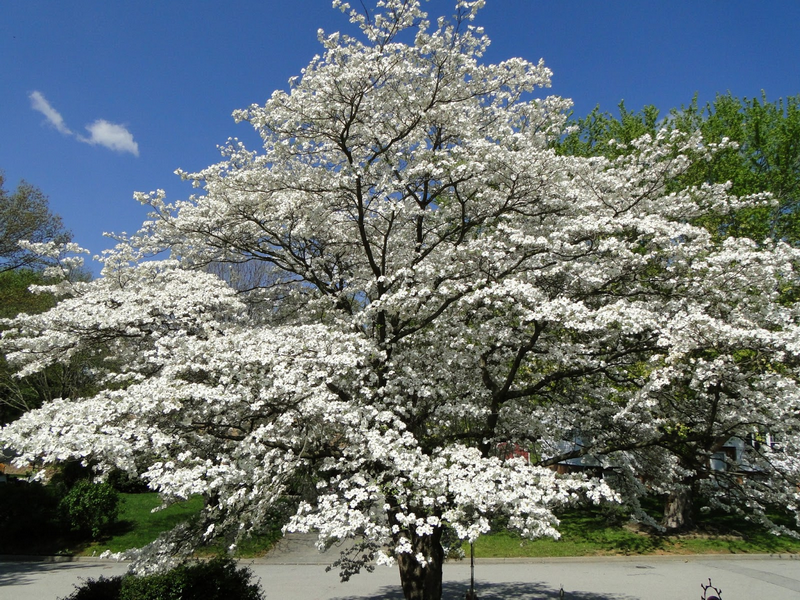Dogwood
Cornus florida
Click here to download a PDF of this plant information page (for printing).

Sun Exposure: Full Sun, Part Sun
Season of Interest: Spring, Fall
Bloom Time: March - April
Bloom Color: White
Height: 15 to 25 ft.
Spread: 15 to 20 ft.
Spacing: 20 ft.
Water Needs: Average
Maintenance: Prune for shape
Soil Type: Loam, Sandy, Clay
Soil pH: Acidic, Neutral
Soil Drainage: Well drained
Pests: Dogwood borer, Sawfly, Scale
Diseases: Powdery mildew, Leafspot, Canker
Wildlife: Bees, Buterflies, Birds, Small Mammals

Description:
The Flowering Dogwood provides year-round attraction to the garden. It looks spectacular when in bloom in the spring, when the leaves turn a long-lasting reddish purple early in the autumn, and even has attractive red fruits in winter. In addition, it has attractive branches and bark, which can be dark grey, black or brown and grows in square blocks that give it an appearance similar to alligator skin.
Dogwoods make a great plant to grow in the garden because it looks great either in small groupings or as a stand-alone specimen tree for the lawn or patio. It is a small tree and can grow in partial shade, so it also performs well when used in the understory of other taller trees. The tree is fairly deer resistance, but they will eat the leaves when they are very hungry. It is a native of the eastern and central parts of the US and is often seen growing naturally in the understories and edges of forests and woodlands. For more information see:
plants.ces.ncsu.edu/plants/cornus-florida
Care and Growing Tips:
Dogwood trees perform best in USDA Hardiness Zones 5 to 9. As an understory tree, it loves partial shade, but it can also tolerate full sun exposure well at maturity if it receives enough water. Leaf scorch can occur when conditions are too dry.
Once your trees have reached maturity, wind or storm damage is rare because the dogwood is a very tough tree. As is the case with many plants, well-draining soil is important along with a moderate level of soil fertility and a pH between 5.5 and 6.5. Soil compaction is another condition that this tree tolerates well, which is handy if you’re working with heavy clay soils. Keep soil fertility up by working a couple inches of well-rotted manure or compost into the root zone every spring.
Spring pruning will keep your tree looking good. Focus on removing dead wood, crossing or rubbing branches, suckers, and any obtrusive branches that hinder inter-canopy airflow. Don’t worry too much about shaping the form or habit since a flowering dogwood will naturally take on an attractive form.